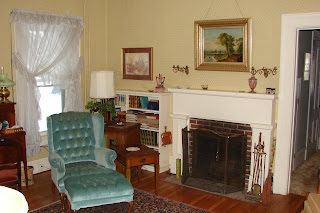More on the EARLY LINDLEY RAILROAD
Source of photo -I neglected to document where I found this photo. (CMP)
Newspaper clipping from my Grandmother November 12th,1939 (Another writer's story of the first railroad through Lindley)
Steuben Vignettes By Sturges f. Cary, Jr.
100th Birthday of "The Iron Horse"
" The Time: Just 100 Years Ago
The Scene: A little locomotive with a big funnel chugging down the Tioga River Valley,to bring Corning railroad service for the first time.
This year marks the centennial of what is now the Pennsylvania Division of the New York Central Railroad. History was made on that day in 1839when the first load of Blossburg coal came into Corning by rail. Today giant engines pound into our city on three great rail lines.
Our pioneer railroad was known as the" Corning and Blossburg" At first ,it had only one locomotive and that would have been dwarfed beside a motor -transport truck on a modern highway. but the tiny engine did its job, which was to haul the soft coal of Bloss and lumber from the Pennsylvania Hills down the Tioga valley for reshipment 40 miles away at Corning via the Chemung Canal (and later the Erie Railroad).
When the Tioga Coal and Iron and Manufacturing was incorporated in 1828,its proprietors were looking for a water route to connect with the eastern markets. They planned on a canal or else improvement on the Tioga River navigation.
When these schemes failed to work ,the company in 1833 had its charter amended to authorize building a railroad. Arrival here of the hustling "Corning Company " of Albany capitalists spurred the project along so that construction began in 1836 and traffic was under way three years later.
The old "C and B" didn't look much like a modern railroad. Its single- track roadbed graded like country highway ,twisted and twined around the bases of the hills in desperate effort to preserve the grade; wooden trestles carried the rails across low sections .(Digging "cuts " and making fills was too expensive.)
The running rails were nothing but iron bars,or strips ,spiked to wooden stringers which were laid end -to -end. sometimes, the iron strips came loose at one end and curled upward in a deadly "snakehead" that might and sometimes did -jab through the floor of the car and impale a passenger. This peril of travel decreased when in 1852,the track was re-laid with solid iron rails. This step was taken as part of the project of altering to the six foot gauge of the newly-completed Erie to permit interchange of cars at Corning without re-loading.
The little engines with their four-foot drive wheels pulled loads of scarcely one twentieth the weight common for the train of today. The passenger cars which looked like stage coaches ,were hitched in the same train as the freight cars. Passenger fare on the line in early days was four cents a mile.If you were coming back the same day or the next day ,it cost five cents a mile going and the return trip was free!!
It was a four or five hour trip from Corning to Blossburg. And ,when the train got off schedule,it had to run by guess,with much tooting of whistles to warn any train that might be coming the other way. Erection of the telegraph line in 1864,was a long stride toward a more efficient operation ,for then, orders could be flashed instantly up and down the line and train movements were better controlled.
Operating troubles of the old "C and B" were matched by its financial problems. In 1852,things got so bad,that the line went under the "hammer" at sheriff's sale. But about this time - John Magee became associated with the road and the Magee interests laid the foundation for the prosperity enjoyed by the descendants of the "C and B" -the Fall Brook Railroad; and today the New York Central ,Pennsylvania Division."
Does anyone know if the Diorama in the old Fallbrook Headquarter's Building was saved when the Corning Fallbrook Plant was demolished a few years ago.??
Thanks to " Google", information about changes in the present Corning/ Wellsboro Railroad due to the gas well industry are on line. The present railroad running through Lindley is a "descendant " of the old " C&B, the Erie and NYC.
There is statue honoring John Magee in Wellsboro's park on Main Street and the Steuben County Historian's Office is located in his former home --- "The Magee House in Bath, New York . He had an interesting life..!!




Comments
Post a Comment